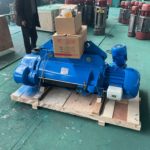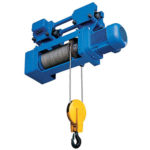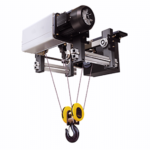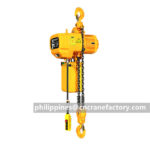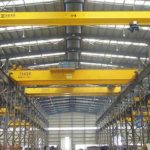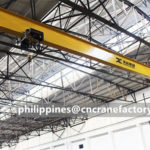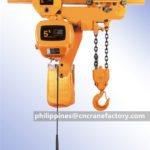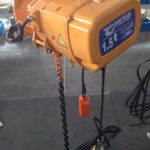Understanding the Lifting Powerhouse: Cranes vs. Hoists in the Philippines
The Philippines, with its booming industries and infrastructure projects, relies heavily on powerful equipment to move heavy objects efficiently. Two essential tools in this area are cranes and hoists. While both play a crucial role in lifting and maneuvering, they have distinct characteristics. This comprehensive guide will explore the differences between cranes and hoists, helping you understand which one best suits your specific needs.
What is an Overhead Crane?
Imagine a giant metal structure spanning a vast warehouse floor. This is an overhead crane, a complex lifting system designed for multi-directional movement of heavy loads. It consists of several key components:

- Bridge: A horizontal beam supported by columns or runways, forming the main structure.
- End Trucks: These travel along the runways, allowing the entire bridge to move back and forth.
- Trolley: A smaller carriage that travels across the bridge beam.
- Hoist: This is the heart of the lifting operation. It raises and lowers loads using a wire rope or chain and a drum.
- Hook: Suspended from the hoist, this is where the load is attached.
Overhead cranes offer a high degree of versatility. They can move loads vertically with the hoist, horizontally along the bridge, and even diagonally depending on the bridge and trolley design. This makes them ideal for various applications in manufacturing, construction, shipbuilding, and more.
What is a Hoist?
A hoist, on the other hand, is a simpler lifting device. It primarily focuses on vertical movement. Think of it as the muscle that raises and lowers objects. Here’s a breakdown of its key components:

- Motor: Provides the power to operate the hoist.
- Drum: A cylindrical spool that winds the wire rope or chain, lifting and lowering the load.
- Hook: Similar to the crane’s hook, this is the attachment point for the load.
- Suspension: This can be a trolley that travels on an overhead track or a fixed mounting depending on the hoist type.
Hoists come in various configurations, including electric, manual, and air-powered options. They can be permanently mounted on a fixed structure or integrated into a more complex system like an overhead crane.
What is a Trolley?
The trolley is a specific component that works alongside a hoist, particularly in overhead crane systems. It’s essentially a motorized carriage that travels horizontally across the bridge beam of the crane. By combining the vertical lifting capability of the hoist with the trolley’s horizontal movement, the crane achieves a wider range of motion for precise load positioning.

Not all hoists require a trolley. Some are designed for fixed installations, where the lifting action itself is sufficient. However, in overhead crane applications, the trolley is a vital part of the system, enabling smooth and efficient load manoeuvring across the work area.
What’s Different About a Hoist and a Crane?
Here’s a quick breakdown of the key differences between cranes and hoists:
| Feature | Crane | Hoist |
| Movement | Multi-directional (Vertical, Horizontal, Diagonal) | Primarily Vertical |
| Complexity | A complex system with multiple components | Simpler device focusing on lifting |
| Application | Large-scale lifting and manoeuvring | Lifting and lowering in specific locations |
| Integration | Can operate independently or as part of a crane system | Can be used independently or integrated into a crane system |
How Does a Crane Run?
Operating an overhead crane involves a coordinated effort between the hoist and the various components. Here’s a simplified breakdown:
- Control Panel: The operator uses a control panel to initiate movement.
- Bridge and Trolley Motors: The operator’s commands activate motors that power the bridge and trolley, enabling horizontal movement.
- Hoist Motor: A separate motor on the hoist is activated for raising or lowering the load using the wire rope or chain.
- Brakes: Brakes are essential for precise positioning and safe operation of the crane.
Modern cranes often incorporate sophisticated features like variable speed control, load limiting devices, and anti-sway features to ensure smooth and safe operation.
How Does a Hoist Run?
The operation of a hoist is relatively straightforward:
- Control Panel/Switch: The operator uses a control panel or switch to activate the motor.
- Motor: The motor powers the drum, which winds or unwinds the wire rope or chain, raising or lowering the load.
- Brakes: Similar to cranes, hoists have brakes to ensure controlled movement and safe load handling.
Depending on the type of hoist, the operator might need to manually guide the load during lifting or lowering. Some advanced hoists may have features like electronic controls
